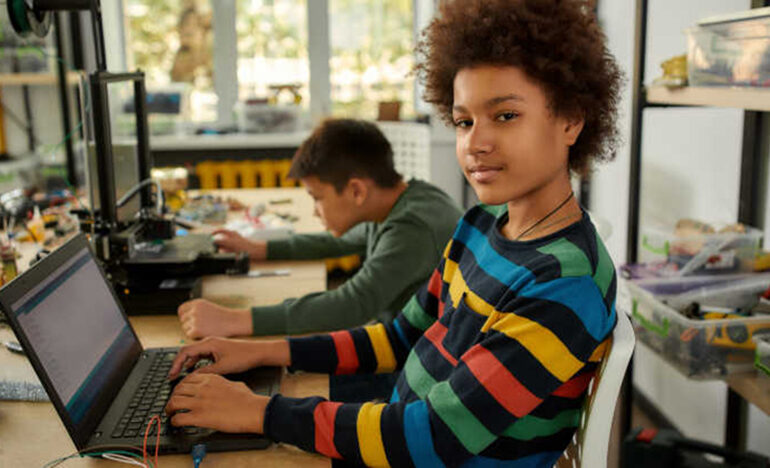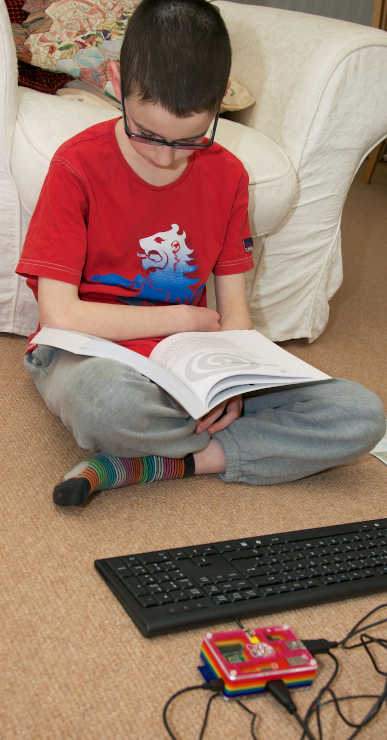Family Matters #6: Creating a caring learning climate

By Lucia Ferrara
From many of us, school is back but now with new rules in place because of the Covid-19 crisis. This new framework was created to implement preventative measures to the pandemic and allow for a positive classroom experience. These measures may look different in your child’s school from mine, and it also depends on the grade level as well. Whatever school your student is attending and whatever their grade, on thing is certain: the school climate and boundaries have changed.
All the articles in the Family Matters series are available here.
Everywhere we go has a climate. It’s about how we feel. The way our youth feels about going to school and learning is connected to what kind of “climate” their school has. Moreover, this year’s learning environment may likely include “virtual learning.” Virtual learning means working remotely from a computer in their homes. A home environment definitely has a different climate than the classroom at school.

The bottom line is that no matter where your student is learning, a healthy learning climate is very important. A healthy learning climate enables the students, staff and parents to all take delight in whatever environment they are in.
Research shows that when in schools with a caring and encouraging learning climate, students tend to make better grades and have healthier relationships with their peers. Surveys done by the Search Institute, a Minnesota-based organization that researches and promotes positive youth development, have found that only 29 percent of youth say their school provides an encouraging and caring environment.
The Search Institute’s Developmental Assets Framework tells us that the external assets of “support” and “boundaries and expectations” are critical to fostering a positive, caring learning environment, whether your child is learning at home or in school.
“Boundaries and expectations” means providing clear, concise rules and making sure everyone knows what the rules are. Children learn better when expectations are laid out for them. For the home learning environment, one option is to post these on the refrigerator or a whiteboard or chalk board at home.
The consequences for not following the rules must also be clear and consistent.
Never miss an article published to the Renewal Center website: Sign up to receive our newsletters.
Communication is the key ingredient. Teachers, parents and students need to work together and talk about creating rules and solutions to problems if they arise. When working together, everyone should feel comfortable in establishing boundaries and positive climates. The more schools, families and communities work together, the better off our young people will be because they will know what is expected of them.
I encourage everyone to reflect on the following questions:
1. Reflect and talk with your children about their learning environment. What is school leadership like? What are the academic expectations?
2. Think about being your child’s advocate by joining the PTA, or volunteering at their school or in the community. Discuss how to improve the climate with a positive attitude.
3. How do the school boundaries match with your home boundaries?
Until next time.
[Lucia Ferrara, the Director of Hospitality at Precious Blood Renewal Center and the lead organizer here of Parent Cafes. Share your thoughts with Lucia or ask her questions at info@pbrenewalcenter.org. Read more about the Parent Café here.]
Image above © Svitlana Ponurkina | Dreamstime.com. Second image “Learning to program” by akrabat is licensed under CC BY-NC-SA 2.0
Related

Pilgrims of Hope, Episode 6: Walking with Cancer Survivors
Hosted by Fr. Ron Will, C.PP.S.
We are talking with people who find hope amid difficult circumstances or bring hope to others. In this episode, Kathy Keary talks about how centering prayer, journaling and other spiritual practices helped her cope with two life threatening health issues.

The Rollercoaster Torture
An Assembling God’s Puzzle video
By Fr. Garry Richmeier, C.PP.S.
Life is full of ups and downs, like a roller coaster, and that fact is a piece of life’s puzzle that we must deal with. Depending on how we deal with it, it can be torture, or it can be simply another difficult aspect of life to be navigated. How do we avoid the torture?
Categories
Assembling God's Puzzle Coffee with Padre Cooking & Spirituality Encounters of the 4th Kind Family Matters Reflections on the Eucharsitic Prayers Spiritual Resources Taize Prayers The Contemplative Life Traveling with Pilgrims of Hope Uncategorized Videos Week of Prayer for Uhristian Unity When you need a little help
